There’s something about a well-built Mercedes-Benz that just hits different. And if you’ve ever spent time behind the wheel of a Mercedes-Benz E 500, you’ll know exactly what I mean. It’s not just a vehicle. It’s a statement—a blend of engineering finesse, German precision, and a touch of rebellious soul.
Whether you spotted it roaring down I-5 through San Diego, caught it gliding past the Capitol in Washington DC, or saw it parked at an upscale auction house, this high-performance sedan makes its presence known.
Let’s dive deep into what makes the E 500 such a great car. From its roots in the early 2000s to its spiritual ties to the Mercedes-Benz 500 E of the early 1990s, the E 500 isn’t just a model. It’s a legacy.
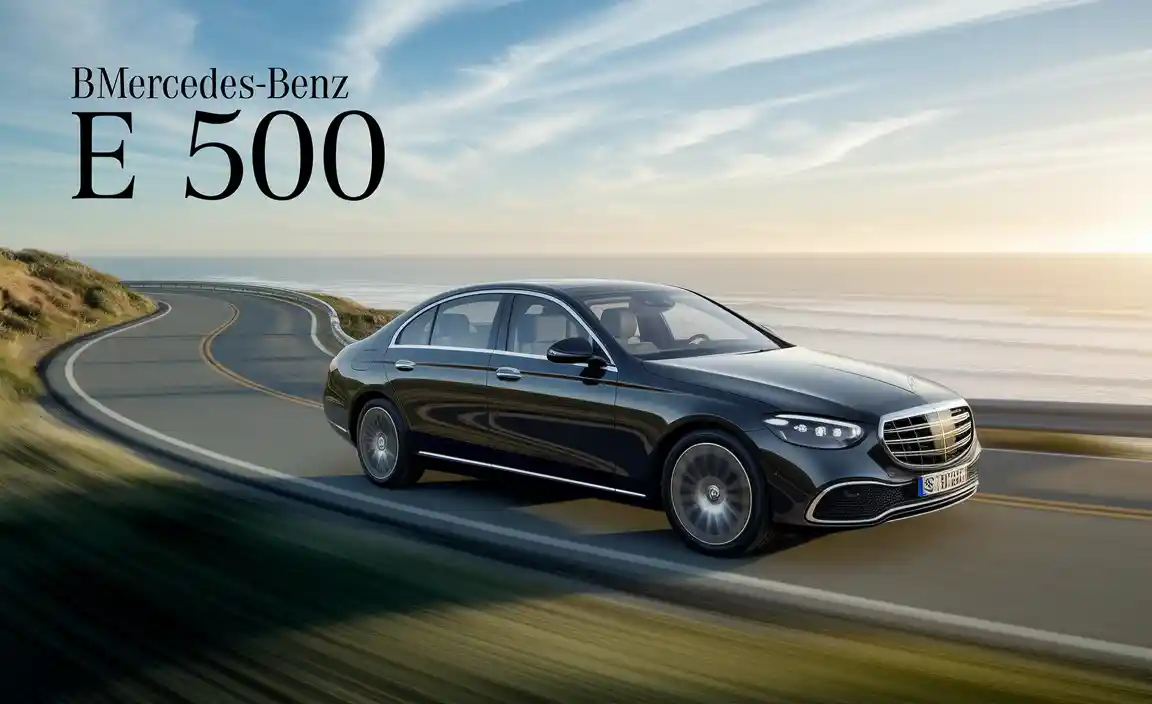
The Launch Of Mercedes-Benz E 500

When Mercedes-Benz brought out the E 500, it wasn’t trying to follow trends—it was setting them. Positioned between comfort and performance, this car carved out its niche. It boasted a 5.0-liter V8 engine, turning heads for both its refined ride and explosive power.
The E 500 was never just about getting from A to B. It was about torque, traction, and the thrill of hitting 100 kmh in just 6.1 seconds. Born out of collaboration and tested on the production line alongside AMG beasts, this model carried DNA from legends like the 500 E and even hinted at its wild cousin, the E 60 AMG.
Overview Of The E-Class E 500 Models
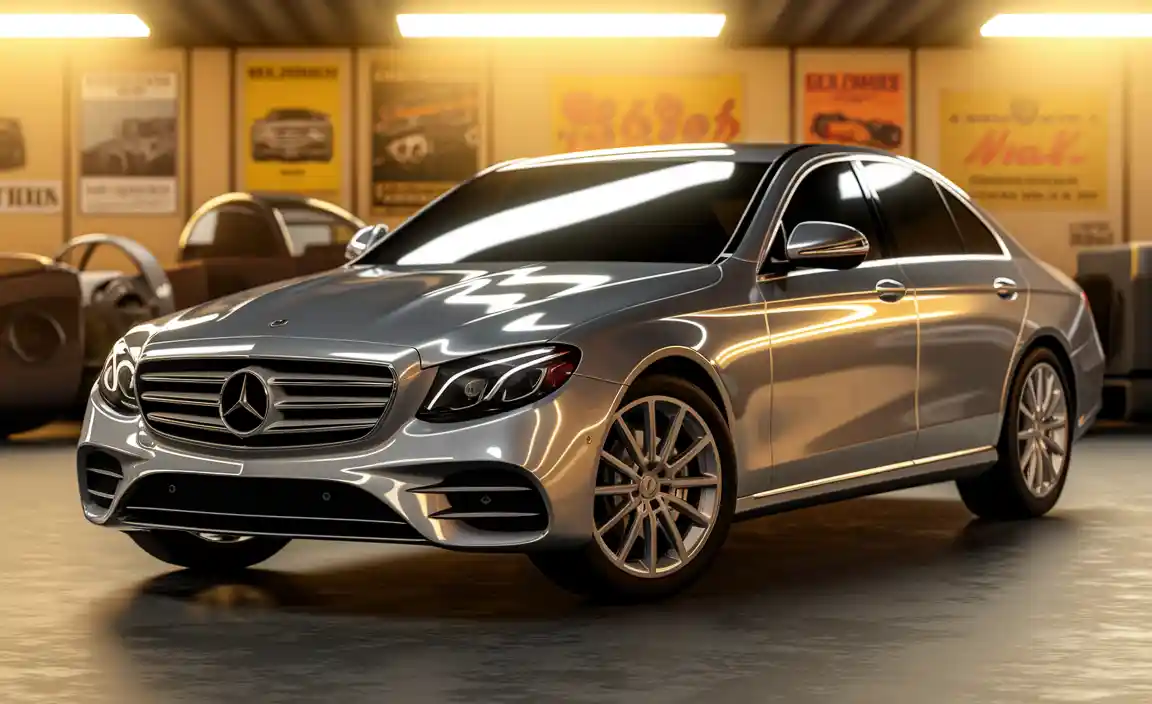
The E 500 slotted into the Mercedes-Benz E-Class range as the go-to option for those wanting a refined but punchy drive. It offered luxury appointments—leather, sunroof, heated seats, and those iconic alloy wheels. But the real magic?
That V8 growl and the buttery-smooth four-speed automatic transmission. It was the kind of car that whispered class and roared power all at once. What makes it fascinating is how different model years brought subtle changes. So, let’s break them down.
The 2003 Model: Features And Pricing
2003 marked the debut of the W211 E 500—a bold refresh with elegance at its core. This model offered Bi-Xenon headlights, air suspension, and refined climate controls. The curb weight sat comfortably at around 1,730 kg, giving it a grounded yet responsive feel.
Pricing at the time hovered around $55,000 in the United States. Today, if you find one in good condition with under 100,000 miles, expect to pay between $7,500 and $12,000. It’s a sweet spot for collectors or anyone wanting timeless muscle in a luxury shell.
The 2004 Model: Features And Pricing
For 2004, refinements were minor but important. Improved software in the automatic transmission and slight tweaks in traction control gave this model a smoother drive. A few interior enhancements added polish—wood trim, upgraded COMAND system, and an improved stereo.
Prices now? Well, on auction sites, a clean 2004 E 500 may cost you anywhere from $8,000 to $14,000, depending on location and condition. San Diego and Washington DC listings tend to run higher due to demand in urban luxury markets.
The 2005 Model: Features And Pricing
2005 saw the E 500 evolve with better reliability reports and slight design updates. This is also the year when buyers could opt for unique trims like the E500 Limited, giving it a collectible status. Think special badging, two-tone interiors, and exclusive color options.
Because of that, pricing has held well. A well-kept 2005 model, especially a Limited edition, might fetch $10,000–$16,000, sometimes more. Enthusiasts are willing to pay for clean examples with full service history.
Pricing Trends For Used Mercedes-Benz E 500
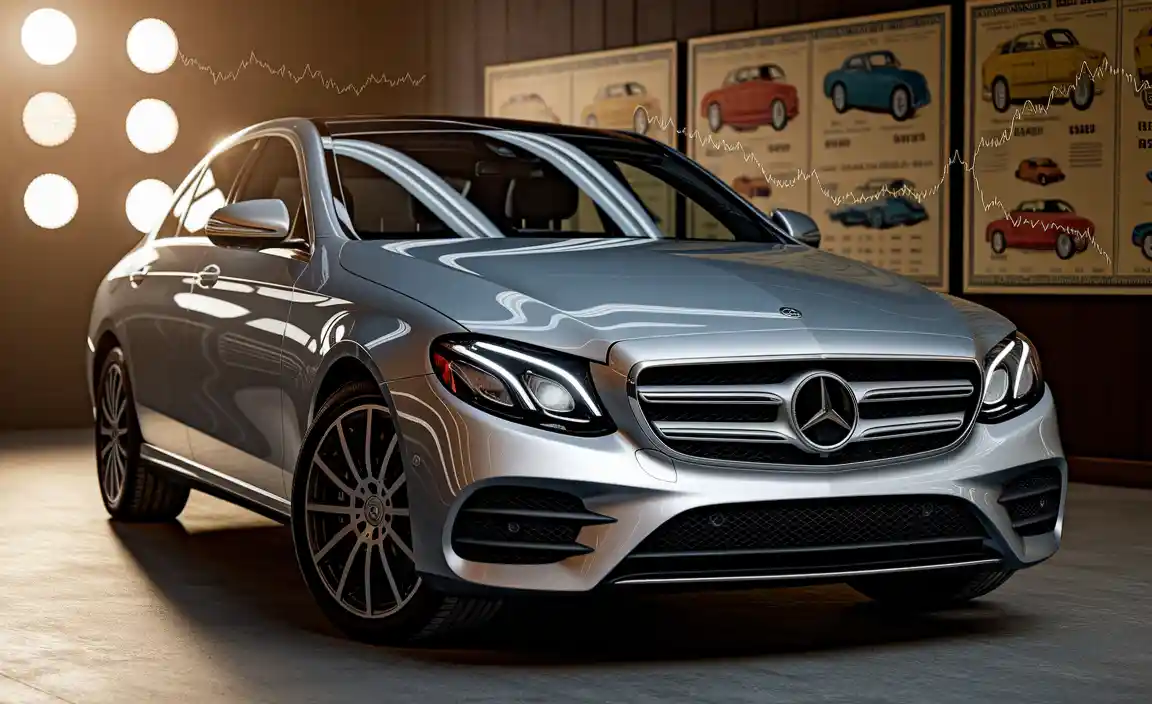
Now let’s talk trends. Over the last few years, we’ve seen a growing appreciation for V8-powered luxury sedans. The E 500 fits that bill perfectly. It’s fast, comfortable, and rare enough to stand out.
On platforms like Cars & Bids or Bring a Trailer, pricing is steadily rising. The sweet spot seems to be between $9,000 and $13,500 for models with under 150,000 miles and complete maintenance records. Mint examples can spike toward $20,000—especially if listed with low personally identifiable information like owner counts and detailed records.
Factors Affecting Price Variation
Why does the price vary so much? Several reasons:
- Condition (clean title, no rust, no accidents)
- Mileage (below 100,000 miles adds value)
- Location (urban centers like San Diego fetch more)
- Ownership history (fewer owners = more value)
- Extras like OEM sunroof, original alloy wheels, and service documentation
Modded versions—especially ones chasing the look of a BMW M5 rival—may drop in value unless they’re done tastefully.
Comparing Price Ranges Across Model Years

Here’s a quick breakdown:
| Model Year | Average Price (USD) | Collector Value |
| 2003 | $7,500 – $12,000 | Moderate |
| 2004 | $8,000 – $14,000 | Moderate |
| 2005 | $10,000 – $16,000 | High (Limited) |
The final assembly quality held across all years, but it’s often the 2005 Limited trims that spark bidding wars at classic car events.
Common Issues With The Mercedes-Benz E 500
Let’s be real—no car is perfect. The E 500, despite being a great car, has its quirks.
Frequently Reported Mechanical Problems
- Air suspension leaks—common around 100,000 miles
- Electrical glitches—especially in COMAND system
- Transmission hesitation in early models
- Crankshaft position sensor failure
These aren’t dealbreakers if caught early. But they’re why thorough vehicle inspection is so important before buying.
Importance Of Thorough Vehicle Inspection
Always get a pre-purchase inspection (PPI). Check the engine, electronics, and all service records. A neglected E 500 can become a money pit. But one that’s been pampered? It’s a steal. Look for signs of rust around the fenders, smooth shifts from the four-speed automatic transmission, and error-free dashboards.
Maintenance Tips For The Mercedes-Benz E 500
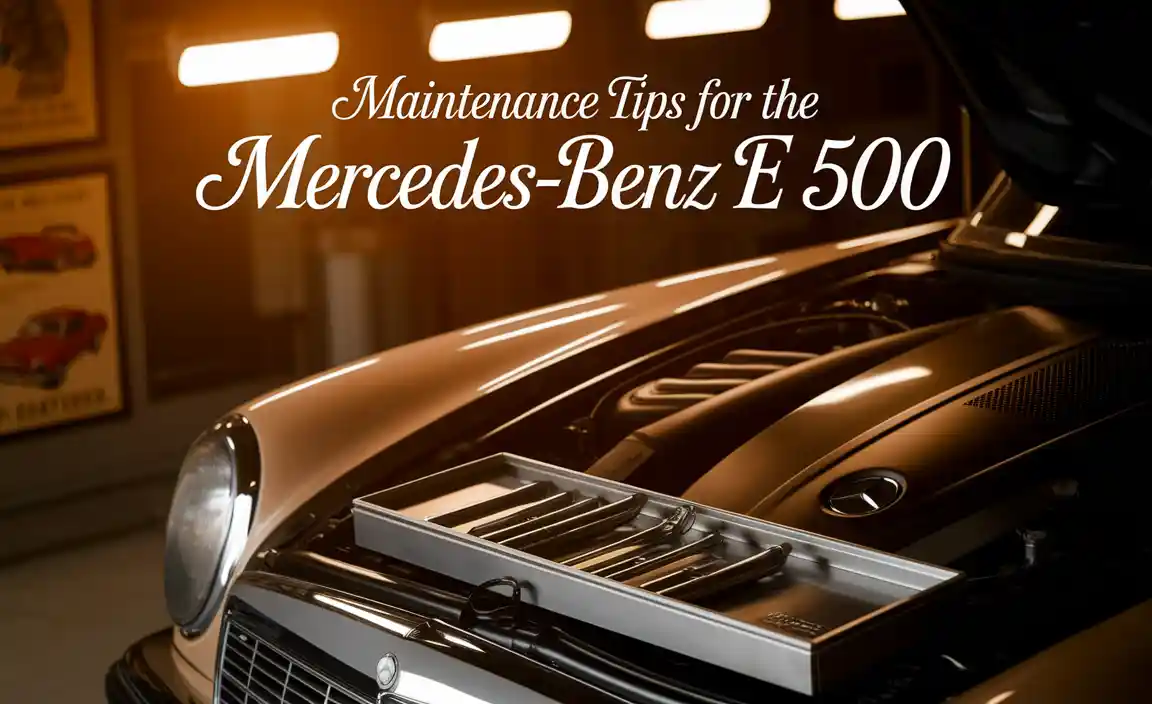
Regular upkeep keeps the beast running strong. Here’s how.
Routine Maintenance Checklist
- Oil change every 5,000–7,000 miles
- Brake pads and rotors checked every 20,000 miles
- Coolant system flush every 30,000 miles
- Transmission fluid every 40,000 miles
- Inspect traction and stability control systems
Importance Of Regular Service Intervals
Stick to the book. The E 500 doesn’t forgive neglect. Factory-recommended intervals help avoid bigger issues. Trust me—spending $300 on early diagnostics is better than a $3,000 air suspension overhaul.
Parts And Replacement: Ensuring Quality And Compatibility
Not all parts are equal. Cheap components can hurt performance or cause more damage long-term.
Advantages Of Using OEM Parts
OEM parts are designed specifically for your Mercedes-Benz car. They fit better, last longer, and keep that high-speed feel intact. From relevant parts like control arms to simple filters, OEM ensures longevity.
Online Resources For Sourcing Mercedes-Benz Parts

Websites like FCP Euro, AutohausAZ, and MercedesSource are goldmines. You can even filter by model year, mileage, and trim level. Many of them offer warranties too, which gives peace of mind.
Buyer’s Guide To The Mercedes-Benz E 500
Thinking about getting one? Here’s what to keep in mind.
Essential Factors To Consider Before Purchasing
- Check full production date and final assembly details
- Prioritize low-mileage and rust-free examples
- Ask for service history—especially suspension and electronics
- Look for well-kept interiors and working sunroof
- Confirm original features like alloy wheels and trim badges
Test Driving And Verification Tips
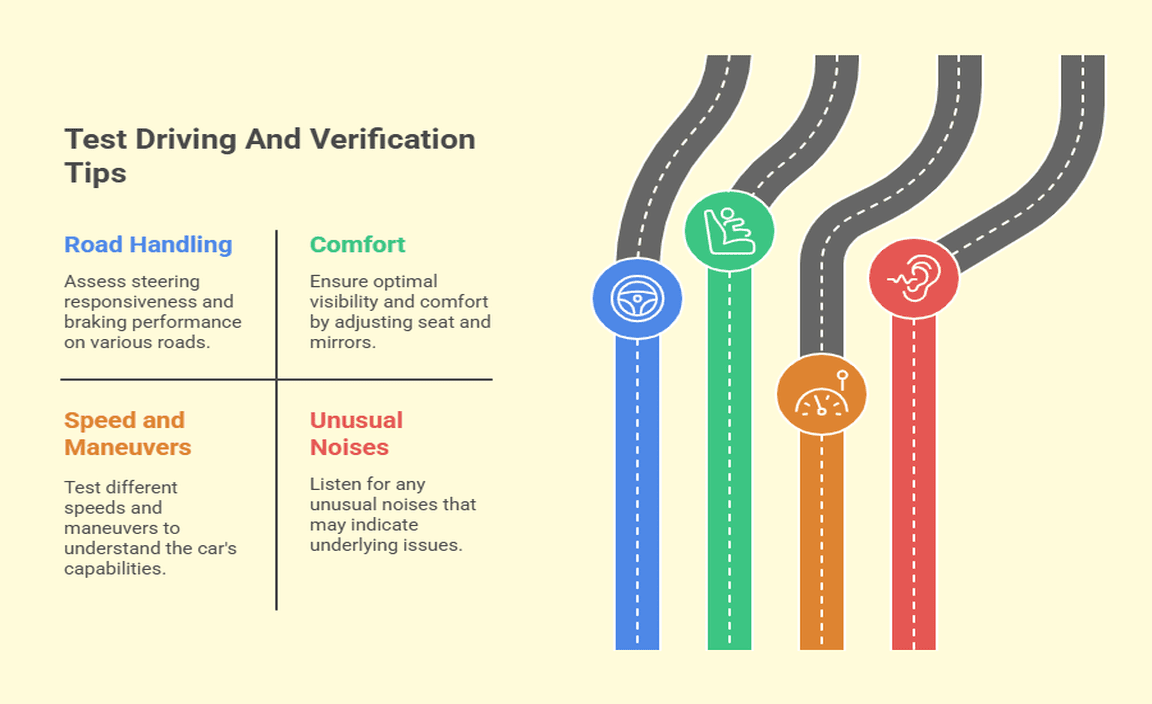
When test-driving:
- Floor it on a straight stretch to feel the torque
- Test traction on curves
- Brake hard (but safely) to check for suspension play
- Listen for odd noises—clicks, whines, or thuds
- Rev it past 100 kmh to feel that legendary 5.0-liter V8 engine
If it passes all that? You’re probably looking at a keeper.
Conclusion
If you’re someone who values character, performance, and timeless design, the Mercedes-Benz E 500 might just be the perfect companion. It’s not a modern tech toy. It’s a big deal with luxury roots, V8 muscle, and the kind of driving feel you just don’t get in newer models.
You’ll get admiring nods at car meets. You’ll feel the thrill every time you merge onto a highway. And you’ll know—deep down—that you’re driving a piece of automotive art.
Whether you buy it to commute, collect, or cruise past the 250 kmh mark on a German autobahn (legally, of course), the E 500 is ready. Just make sure you’re ready for it too.
People Also Ask
1.Is The Mercedes-Benz E 500 A Reliable Car?
Yes—if it’s well-maintained. The Mercedes-Benz E 500 is known for durability, but like any high-performance sedan, it needs regular service. Avoid neglected examples, especially those with air suspension or electrical issues.
2.What Engine Is In The Mercedes-Benz E 500?
It comes with a 5.0-liter V8 engine, delivering around 302 horsepower and plenty of torque. It’s smooth, responsive, and built for both city cruising and high-speed highway runs.
3.How Much Is A Used Mercedes E 500 Worth?
It varies. Depending on model year, miles, and condition, prices range from $7,500 to $16,000. Rarer trims like the E500 Limited or pristine models can fetch more at auction.
4.What Are Common Issues With The E 500?
Watch out for air suspension leaks, four-speed automatic transmission hesitation, and electrical quirks. These issues are fixable—but only if caught early. Always get a thorough vehicle inspection before buying.
5.Is The E 500 Related To The Mercedes-Benz 500 E Or E 60 AMG?
Definitely. The E 500 shares a performance lineage with the Mercedes-Benz 500 E and the fire-breathing E 60 AMG. They’re all V8-powered and known for their unique mix of luxury and muscle.
6.How Fast Is The Mercedes E 500?
It hits 100 kmh in just 6.1 seconds and has a top speed of around 250 kmh (or 150 mph) when unrestricted. It’s fast for its size and weight, and feels even quicker thanks to its meaty torque curve.
7.What Should I Check Before Buying A Used E 500?
Service history, suspension condition, electronics, and OEM parts usage. Also verify production details and test features like the sunroof and traction systems. Don’t skip the test drive!
8.Can I Daily Drive The Mercedes-Benz E 500 Today?
Absolutely. Many owners do it daily. It’s comfortable, quick, and stylish. Just be ready for a few extra trips to the gas station and regular maintenance. But hey—it’s worth it.